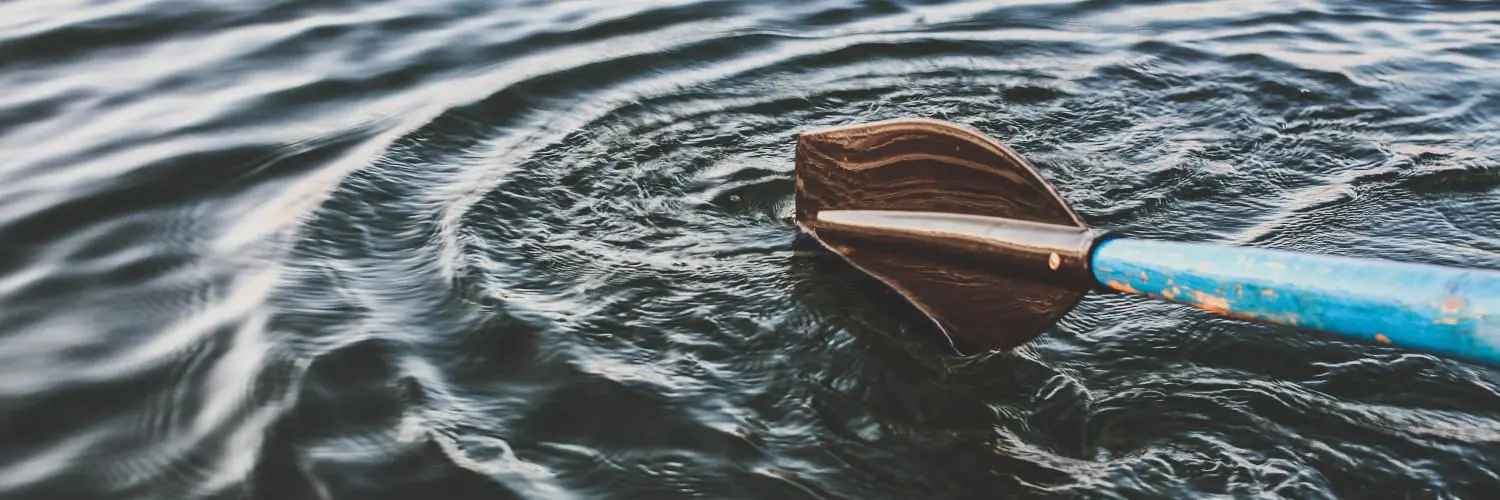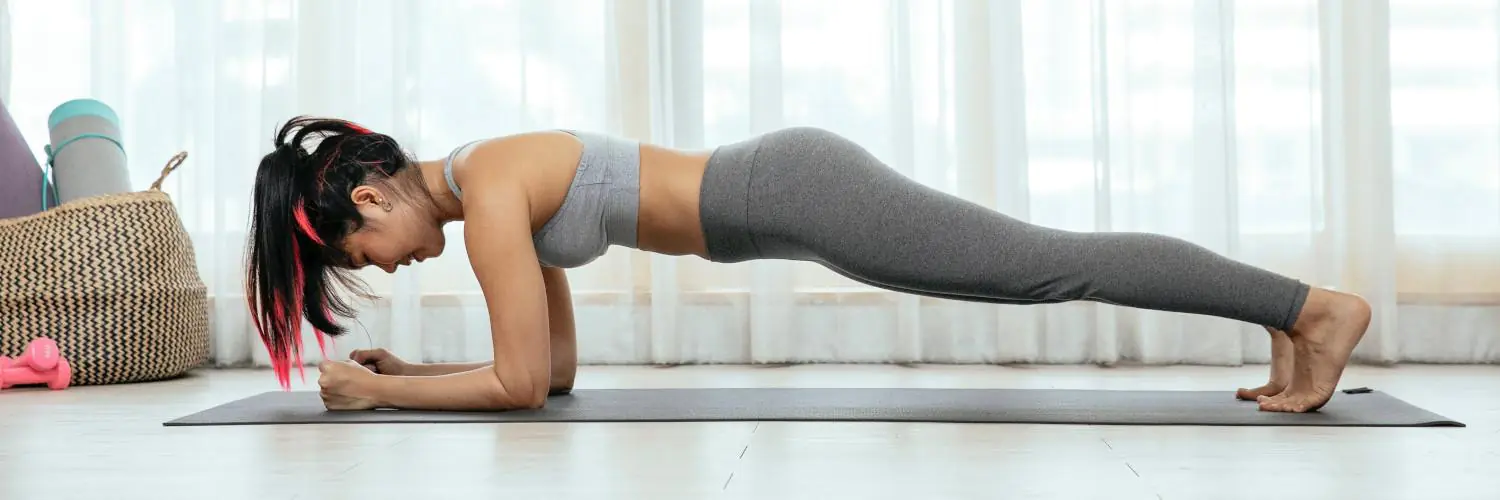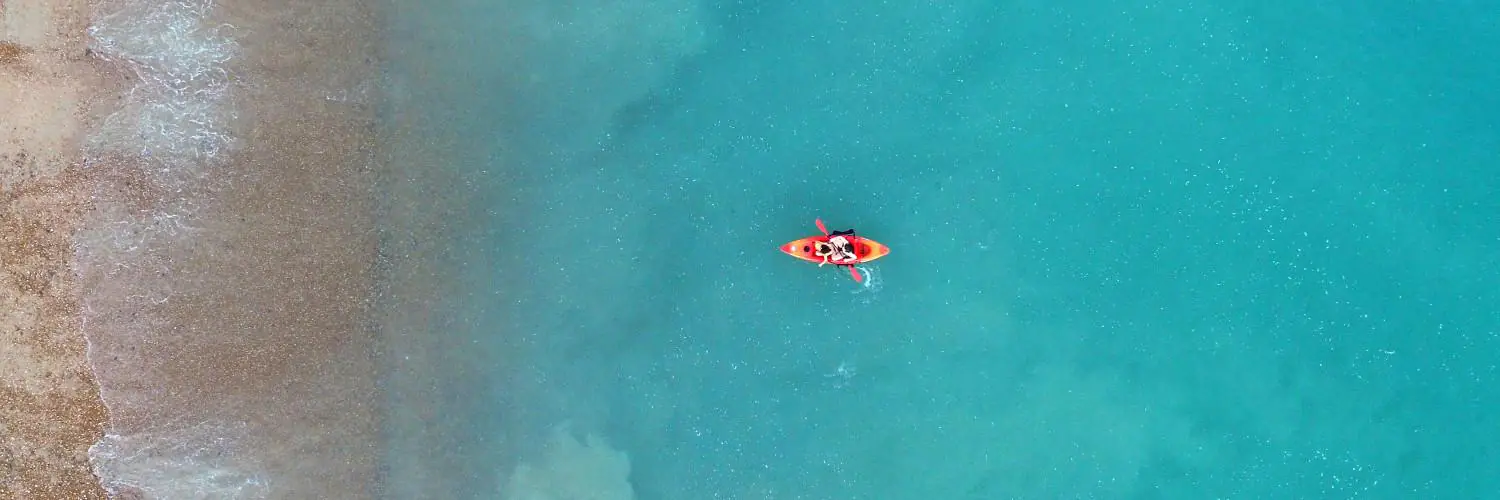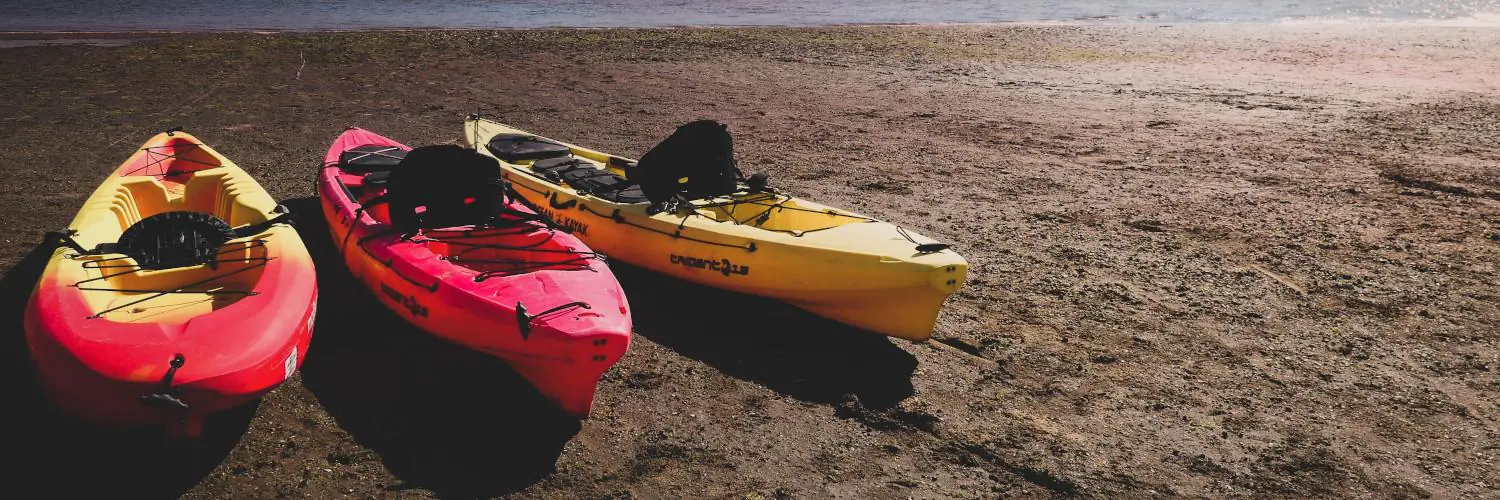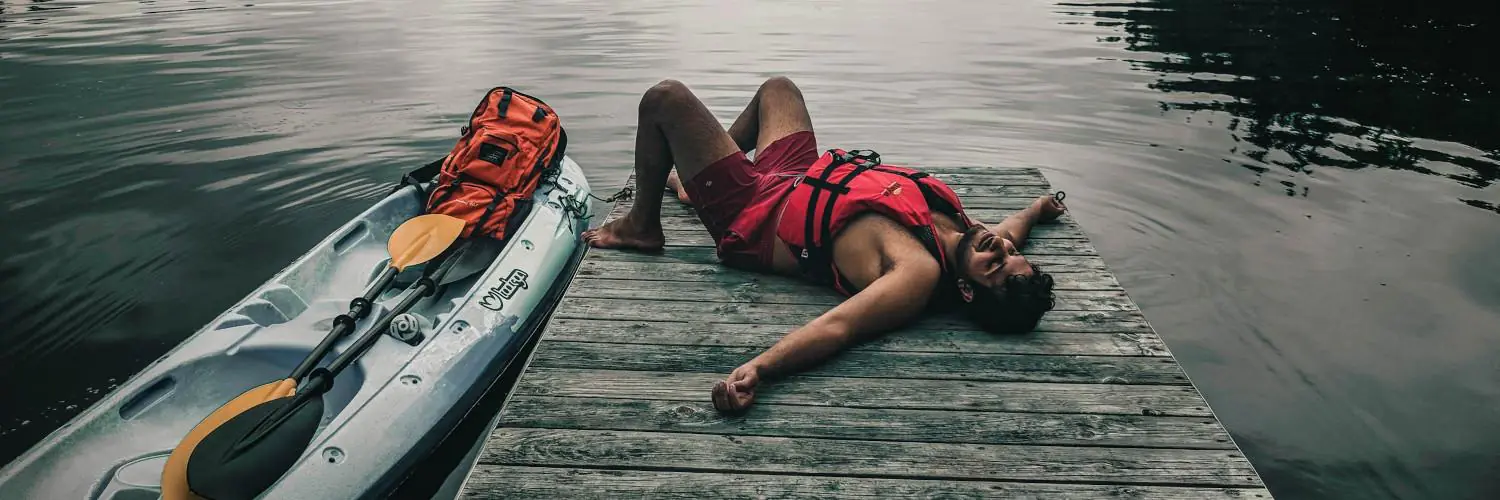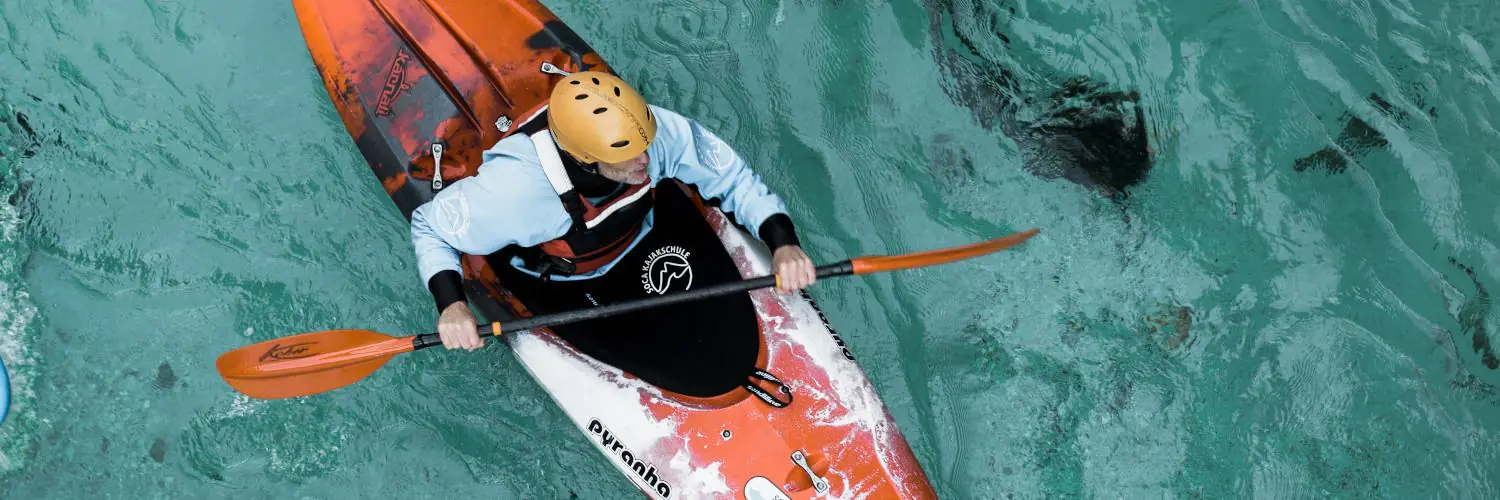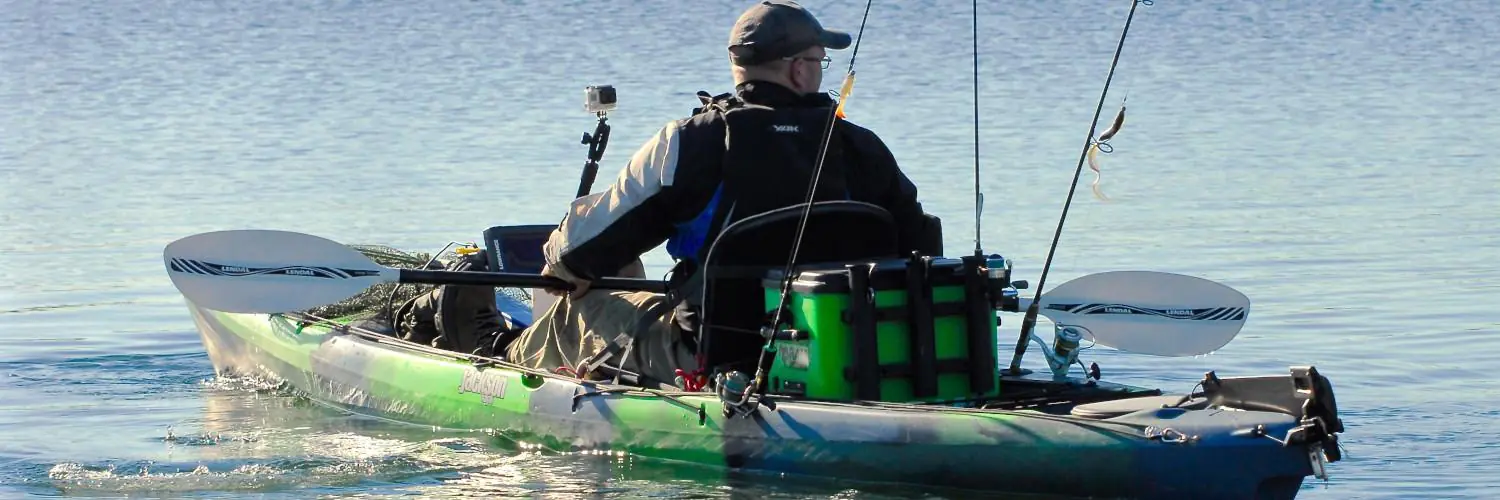Whitewater kayaking can be an exciting adventure for kids, but it’s important to have the right kayak that fits their size and skill level. A good whitewater kayak for kids should be smaller, lightweight, and designed for stability and safety on moving water. With a proper kayak, young paddlers can enjoy the thrill of rapids while staying comfortable and secure.
Many kids’ whitewater kayaks are made to handle easy to moderate river sections and are often available in sit-in or sit-on-top styles. Parents and guardians should make sure the kayak matches the child’s ability and always have them wear safety gear like a helmet and life jacket. Choosing the right kayak helps build skills and makes the sport fun for the whole family.
Table of Contents
What Is a Whitewater Kayak for Kids?
A whitewater kayak for kids is a small, specially designed boat that lets children safely and comfortably paddle in moving water. These kayaks are different from regular ones because they focus on safety, control, and stability for younger users.
Differences Between Whitewater Kayaks and Recreational Kayaks
Whitewater kayaks and recreational kayaks are made for very different activities. Whitewater kayaks for kids are shorter, narrower, and have a curved shape to make it easier to handle fast-moving rivers and waves. This shape lets kids turn quickly and avoid obstacles.
Recreational kayaks are longer and wider. They are designed for calm lakes or slow rivers. These boats focus on comfort and going straight, not quick turns or safety in rough water.
Whitewater models usually have reinforced hulls to resist impacts from rocks. They also feature specialized fittings that help the paddler stay in the kayak. This is especially important for a kids kayak because safety and control are the main priorities when children are paddling in whitewater.
Key Features Designed for Youth
Whitewater kayaks built for kids come with several important features to make paddling safer and more enjoyable:
- Lightweight construction: Easier for children to carry and control
- Narrower width: Fits smaller bodies, allowing better grip and balance
- Supportive seats and adjustable foot braces: Help kids sit comfortably and paddle with stability
- Safety handles and grab loops: For rescues and easy transport
Some kids kayaks, like the Jackson Sidekick or Dagger Rewind XS, are scaled down versions of adult models but focus on stability and easy handling. Bright colors and lighter weights make it easy to spot and move these kayaks. Each design detail helps children gain confidence in the water and learn skills safely.
Types of Kayaks for Kids
Choosing the right kayak for kids depends on factors like age, skill level, and where the kayak will be used. Each kayak type has unique features that make it better suited for different water conditions and paddling experiences.
Sit-On-Top vs Sit-Inside Kayaks
Sit-on-top kayaks are popular with young paddlers because they are easy to use and get in and out of, even in the water. The open deck design prevents kids from feeling trapped, which is important for confidence and safety. This type is a good fit for warm weather and calm, slow-moving water.
Sit-inside kayaks offer more protection from splashes and cold water. They are often chosen by kids who have some paddling experience and want to tackle rougher water or cooler climates. Sit-inside models let young paddlers stay drier and give more control in whitewater, but they have a learning curve.
Parents should consider safety, the child’s age, and typical water conditions when picking between these styles. Younger kids usually feel more secure and independent on sit-on-top kayaks, while advanced kayakers may prefer the performance of a sit-inside kayak.
Inflatable Kayaks for Young Paddlers
Inflatable kayaks are becoming more popular for families who value portability and easy storage. These kayaks are light, can be packed into a car trunk, and are simple to inflate on the spot. They are usually made of strong, puncture-resistant materials, making them safe for most flatwater and gentle river use.
Pros of inflatable kayaks:
- Easy to transport
- Soft sides that are less likely to injure if a child bumps them
- Fast to set up and take down
Cons of inflatable kayaks:
- Less durable than hard-shell kayaks in sharp rocky areas
- Can be less stable in strong currents or whitewater
Inflatable kayaks work well for beginner paddlers or for families who want an extra, fun option for vacations or short trips to the lake.
Comparison: Youth Kayaks Across Categories
Youth kayaks are designed to fit lighter weights and shorter legs, making paddling more comfortable and manageable for kids. Most kid kayaks weigh between 20 and 30 pounds, which helps with carrying and launching.
Below is a table comparing main features:
| Type | Weight | Best For | Pros | Cons |
|---|---|---|---|---|
| Sit-on-top | 20-30 lbs | Beginners, warm water | Easy entry/exit, less confining | Exposed to elements |
| Sit-inside | 20-30 lbs | Experienced, colder | Dry ride, better control | Requires more skills |
| Inflatable | 16-25 lbs | Travel, occasional use | Portable, soft-sided, lightweight | Not for rough water |
Parents should match the kayak style to their child’s age, strength, and preferred water activity.
Popular Models Like the Lifetime Youth Wave Kayak
Some youth kayaks stand out for safety and value. The Lifetime Youth Wave Kayak is a popular choice for kids ages 5 and up. It weighs about 18 pounds and is easy for most kids to move by themselves.
Key features include a swim-up rear deck, which helps kids climb aboard from the water, and molded finger handles for easy carrying. The design helps young paddlers learn basic kayaking skills while keeping safety in mind.
The Perception Hi-Five Kids Kayak is another top pick. It is six feet long and has a design that balances stability, tracking, and fun for young users. Both these models have strong reviews from parents for being sturdy and easy to handle, making them among the best kids kayaks for beginners.
Choosing the Best Whitewater Kayak for Kids
Selecting a whitewater kayak for children requires careful attention to safety, fit, and how easy the kayak is for them to use. The best kids kayak will offer a mix of stability, comfort, and support for their level of experience.
Primary Factors to Consider
The most important consideration is stability. Kids kayaks designed for whitewater should have a wide base to reduce the risk of tipping. This feature helps children feel secure while navigating rapids. For kids, a sit-on-top style can be easier to use for quick exits and getting back on the kayak.
Weight matters as well. The kayak should be light enough for a child to handle on their own, usually under 30 pounds. Easy maneuverability allows kids to build confidence while paddling. Material durability is also key. Most youth kayaks are made from tough polyethylene, which can handle impacts and rough treatment.
Parents should check that the kayak includes grab handles and towing points. These features make it easier to move the kayak and provide additional safety if assistance is needed on the water.
Matching Kayak Size to Age and Skill Level
A good kayak for kids should match both their age and experience. Younger children, ages 4 to 8, generally do best with ultra-light models about 6 feet in length. These kayaks are easier for them to control and carry.
For kids aged 9 to 13 or those with more paddling skill, slightly longer kayaks (7–8 feet) offer better tracking and speed without becoming difficult to steer. It’s important that the fit allows the child to reach the footrests and paddle comfortably.
Below is a quick reference for choosing kayak size:
| Age | Kayak Length | Weight Limit |
|---|---|---|
| 4–8 years | 6 ft | Up to 100 lbs |
| 9–13 years | 7–8 ft | Up to 130 lbs |
Heavier or taller kids might need youth kayaks with a larger cockpit or higher weight capacity.
Key Safety Features for Children
Prioritize safety when choosing a child’s whitewater kayak. Look for kayaks with high-visibility colors, making it easy to spot kids on the river. A swim-up deck at the rear helps children re-enter the kayak after swimming or a capsize.
Grab handles are essential for rescuing or steadying the kayak in moving water. Sit-on-top models allow for quick exits, which is a key safety advantage in whitewater conditions. Internal flotation blocks or sealed bulkheads add buoyancy and make it harder for the kayak to sink if it fills with water.
Assembling a proper kayak buying guide for kids should always include checking the kayak’s safety certifications and manufacturer recommendations for child use.
Kids Kayak Reviews and Recommendations
Parents often look for kayaks that offer safety, stability, and easy handling for children. Price, weight limit, and durability also matter when choosing the right kayak for kids.
Best Overall Kids Kayaks
The Lifetime Youth Kayak stands out among many kids kayak reviews. It is lightweight at about 18 lbs, which makes it easy for kids aged five and up to carry. The 6-foot length and swim-up deck add safety and usability.
Most hardshell kids’ kayaks for whitewater have weight limits between 100 to 130 lbs. Features like grab handles and footrests help children feel more secure. For kids with more experience, small whitewater models are available, but these usually cost between $500 and $1,000.
Other highly-rated models are the Perception Prodigy XS and Jackson Fun 1. These options are stable, easy to paddle, and can handle light whitewater. Always review the manufacturer’s recommendations for size and weight limits.
| Kayak Model | Weight Limit | Length | Type | Price Range |
|---|---|---|---|---|
| Lifetime Youth | 130 lbs | 6 ft | Sit-on-top | $120–$160 |
| Perception Prodigy | 150 lbs | 10 ft | Sit-inside | $350–$400 |
| Jackson Fun 1 | 90 lbs | 5 ft | Whitewater | $500–$1,000 |
Top Inflatable Kayaks for Kids
Inflatable kayaks for kids are easy to transport and store. They tend to be less expensive than hardshell options. Many kids enjoy inflatables because they weigh less and are comfortable to sit in.
The Intex Challenger K1 is a popular inflatable model. It is recommended for flat water, with a 100-lb weight limit, and comes with a paddle and pump. The Sevylor QuikPak K1 is also kid-friendly and features a simple setup that most children can handle.
Safety is important with inflatable options. Always check for multiple air chambers and sturdy materials. For whitewater, only advanced inflatable kayaks are suitable, and these are more expensive. Beginners should stick with inflatables designed for calm lakes or slow-moving rivers.
Getting Started with Whitewater Kayaking for Kids
Learning whitewater kayaking is exciting and safe when kids have the right training, equipment, and supervision. Parents and instructors should focus on fundamental skills, safety rules, and suitable gear to help kids enjoy their first experiences with a kids kayak or youth-sized boat.
Introduction to Basic Paddling Skills
Children need to start with simple paddling techniques using a well-sized kayak for kids. Short lessons in calm water, like shallow pools or lakes, are best for learning how to grip the paddle, basic strokes, and turning. It’s helpful to break skills into steps, such as forward stroke, reverse stroke, and stopping.
Practicing balance is important. Kids can try sitting in the kayak on land first before moving to water. Short practice sessions reduce fatigue and help with focus. When kids paddle with friends or siblings, it can make learning fun and social.
Enrolling kids in beginner classes or group lessons lets them watch others and learn by example. Using a single or tandem whitewater kayak depends on their age and skill. Younger children may do well as a “duffer” in a tandem and take on more paddling as they grow.
Safety Tips and Supervision
Safety is the top priority when introducing kids to whitewater kayaking. Supervision is required at all times, even in slow-moving water. Instructors and parents should know basic rescue skills, including how to assist if a child flips the kayak.
Every child must wear a U.S. Coast Guard-approved life jacket that fits snugly. Helmets are also required when practicing on rivers or around rocks. Kids should be taught to listen carefully to safety commands such as “stop,” “paddle back,” and “move to shore.”
Start in safe water conditions. Slow, shallow rivers or pools are best for building confidence. Weather, water temperature, and sun exposure should be checked beforehand. Paddle with a buddy when possible. Adults should always be within arm’s reach, especially if a child is a new paddler.
Essential Gear for Young Kayakers
The right gear is critical for comfort and safety. Kids kayaks are designed to be lighter and smaller, making them easier for children to control. An appropriately sized paddle should allow a child to reach the water comfortably without straining.
Every paddler needs a personal flotation device (PFD). Choose a life vest designed for kids; it should not ride up or slip when tightened. Helmets are a must for whitewater conditions to protect against unexpected bumps and rocks.
Kids should wear clothing that protects them from the sun, such as a rash guard or a long-sleeve shirt with a high SPF rating. Water shoes or sandals with a secure fit help protect feet when walking in rocky areas. Dry bags and whistle lanyards are added extras for safety and storing snacks or other essentials.


